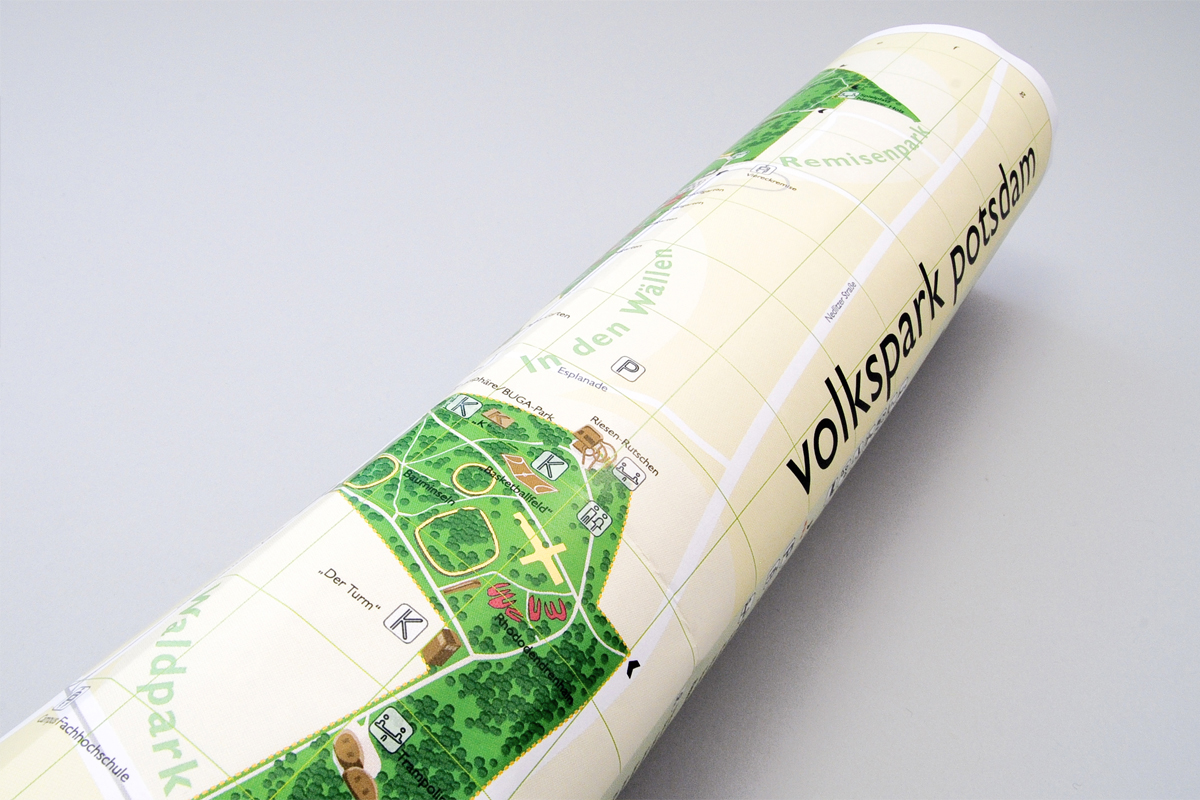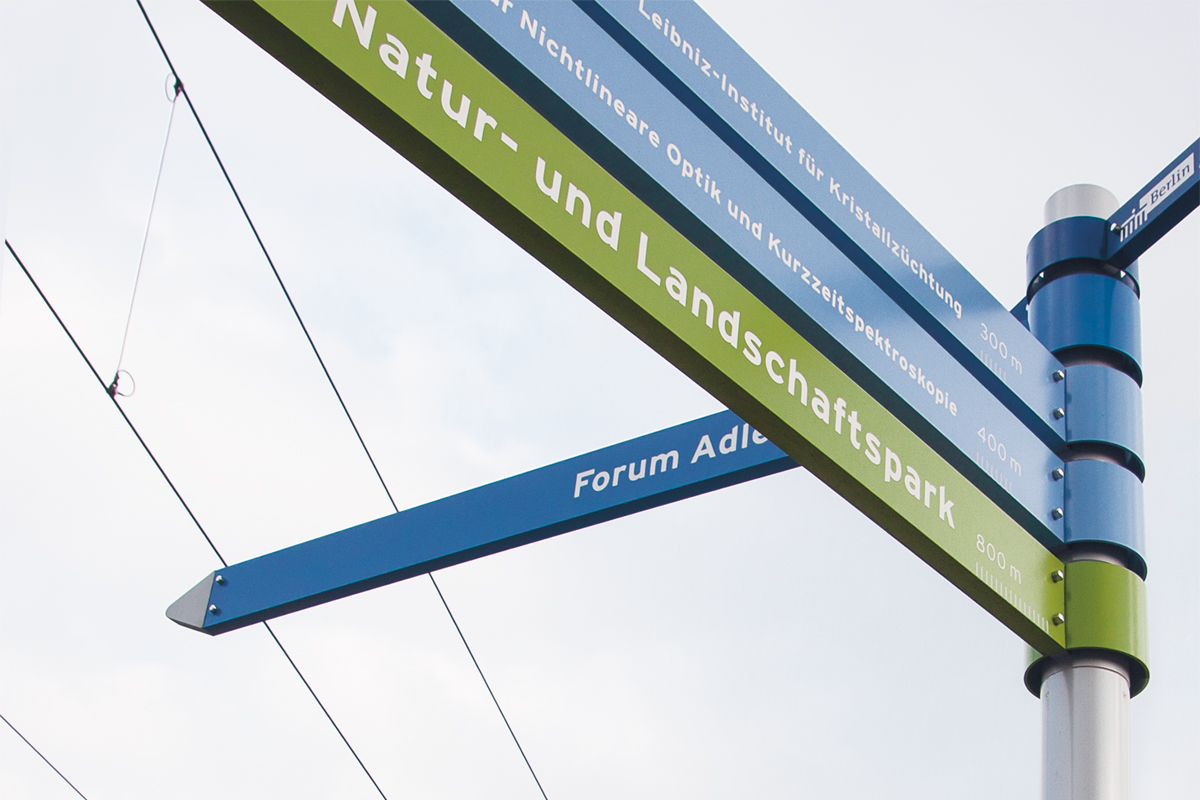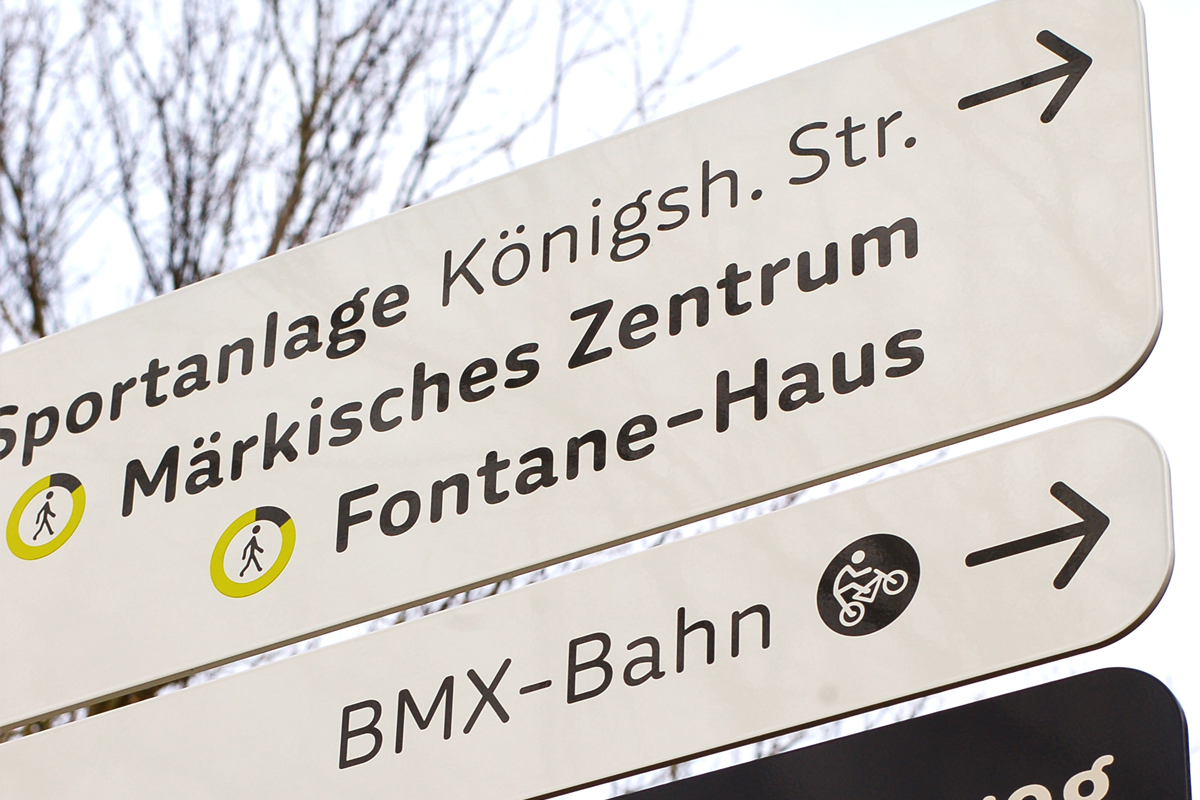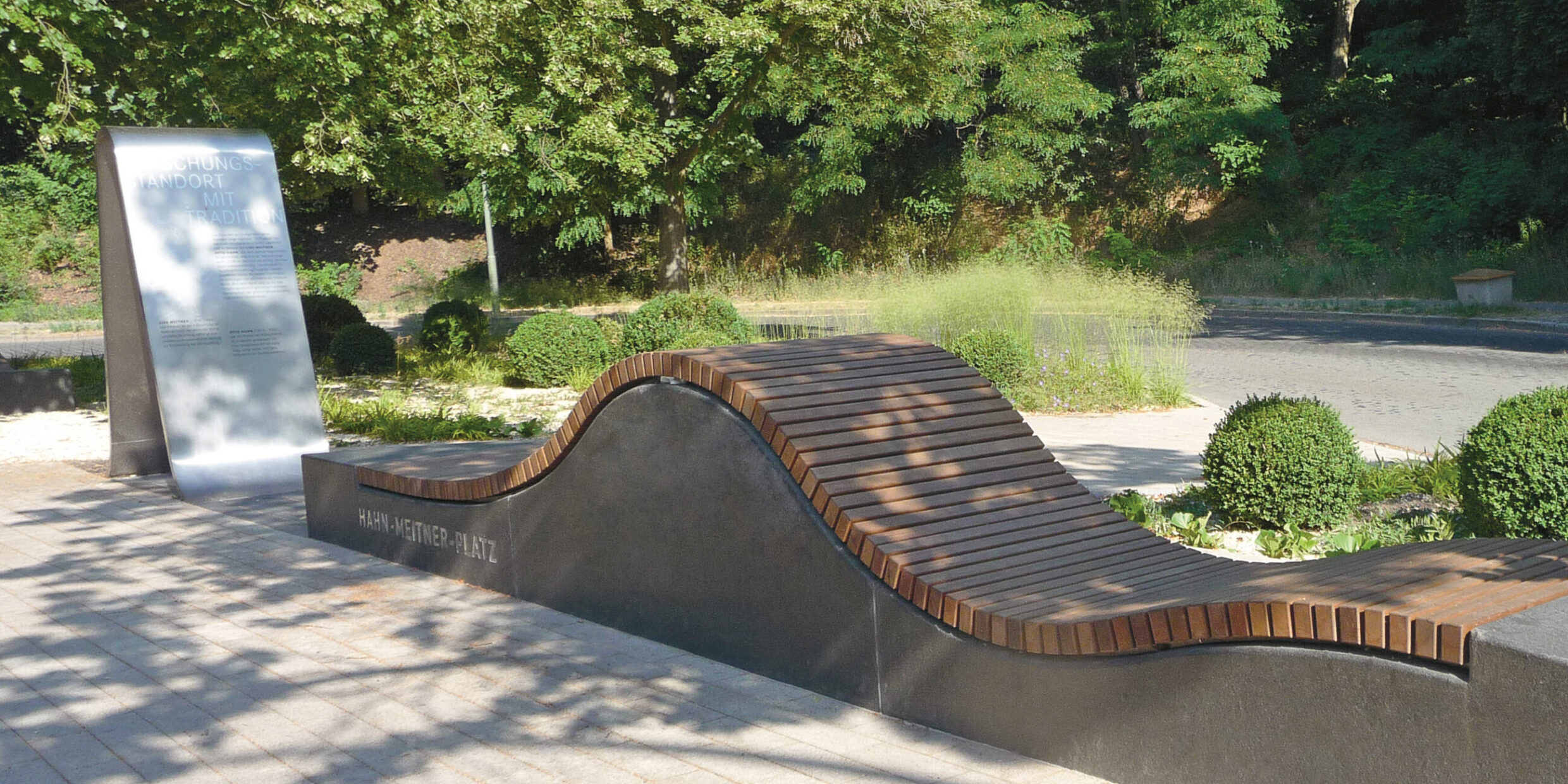
Helmholtz-Zentrum
Visitor Path
The Helmholtz Centre in Berlin is one of the most famous research centres in the world. 2,500 of the greatest minds in science conduct research here in the fields of materials and energy. Moniteurs and Glaßer und Dagenbach landscape architects drew on these topics and transformed the unrepresentative driveway to the research centre into a landscape of waves. Waves are the common denominator of energy and magnetic fields. Here they are stelae that guide the visitor to the research centre and, along the way, provide information about the centre’s founders, its key ideas and its subjects of research. The orientation system is here a landmark that not only orients, but deepens and builds an image in visitors’ minds. The benches, integrated into the wave structure, invite passers-by to stay a while.
Visitor Orientation and Information System Outdoor area
Berlin 2010
Client
Helmholtz-Zentrum Berlin für Materialien und Energie GmbH
Landscape architecture
Glaßer and Dagenbach
Distance
500 m long
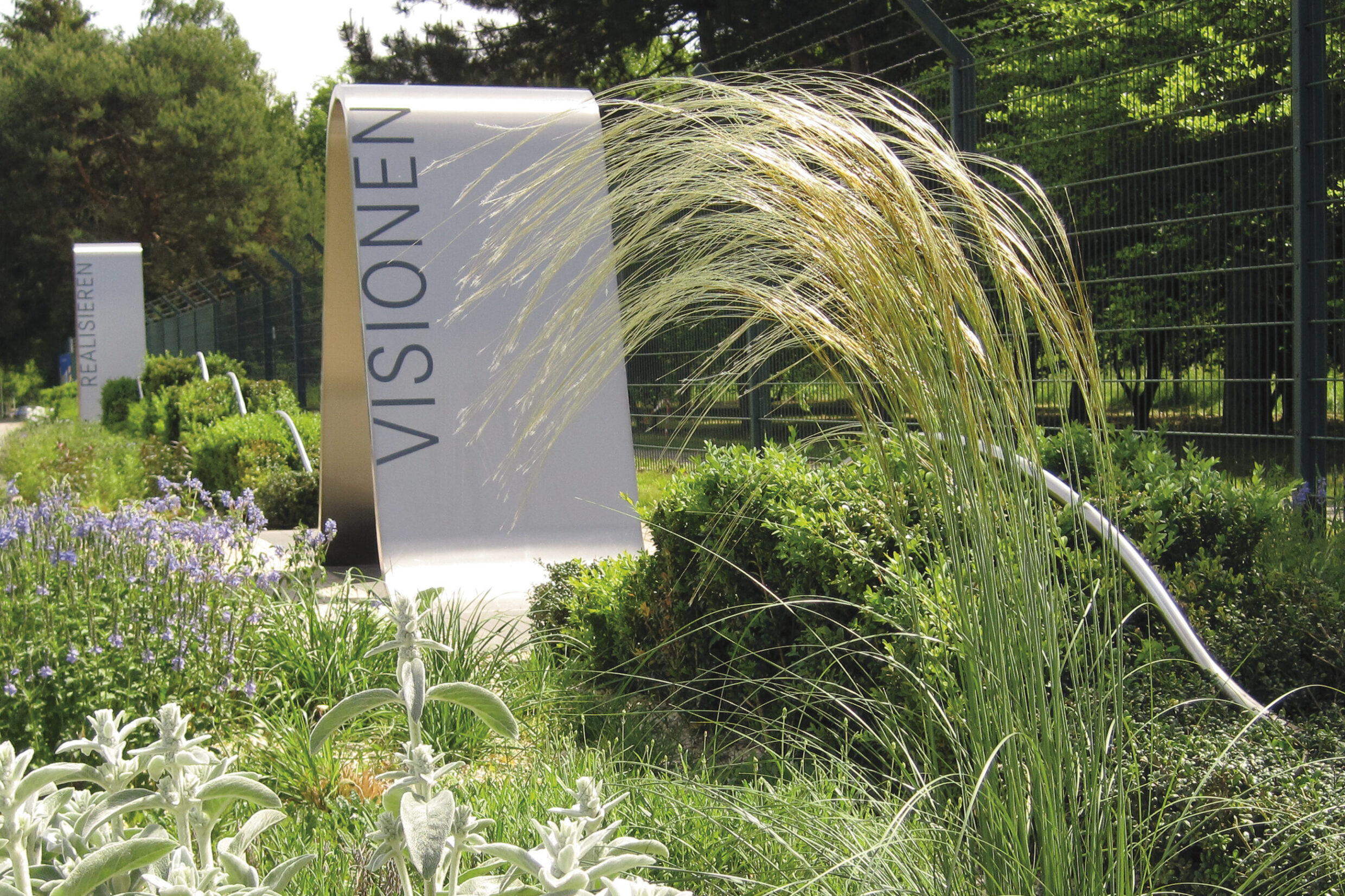
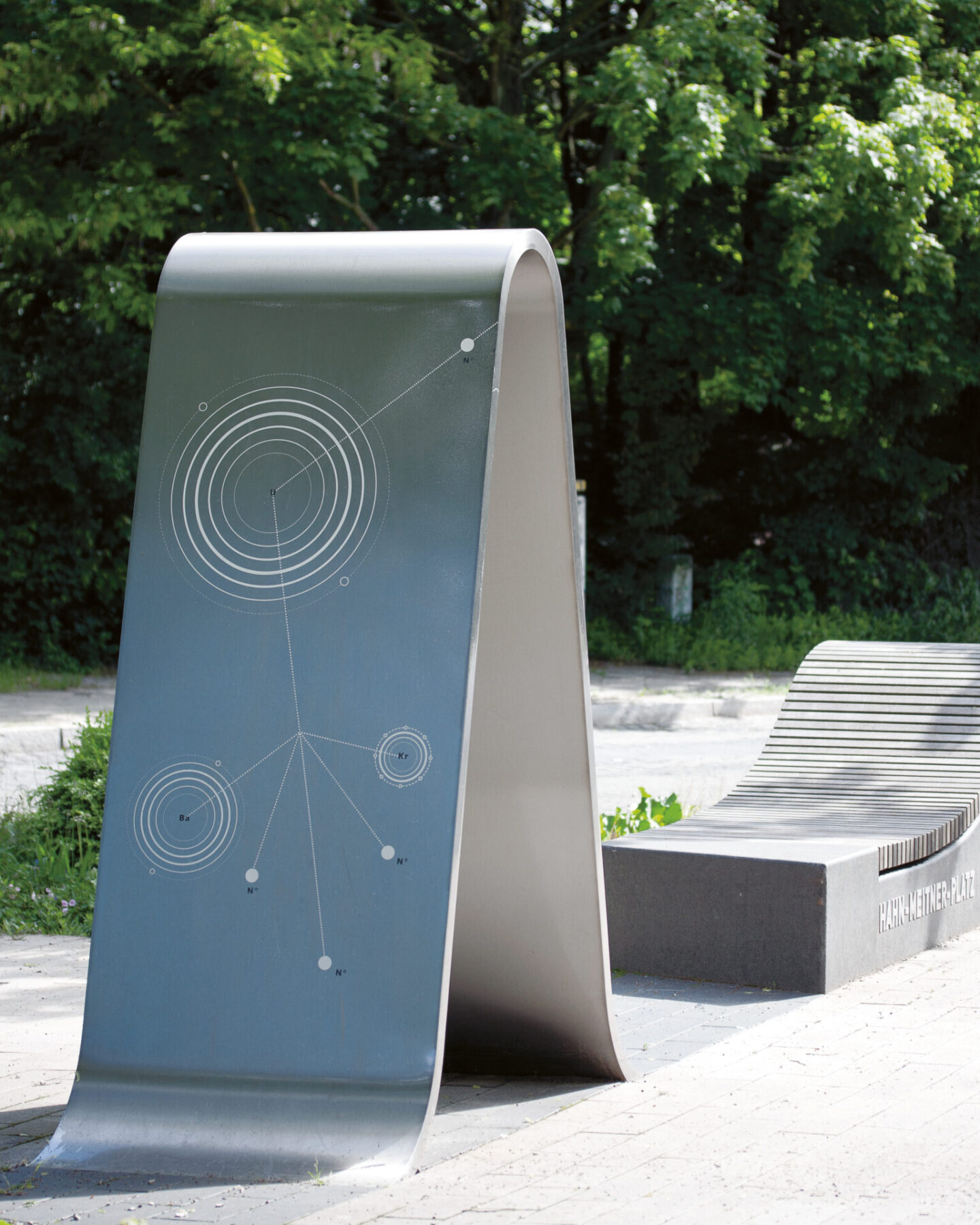
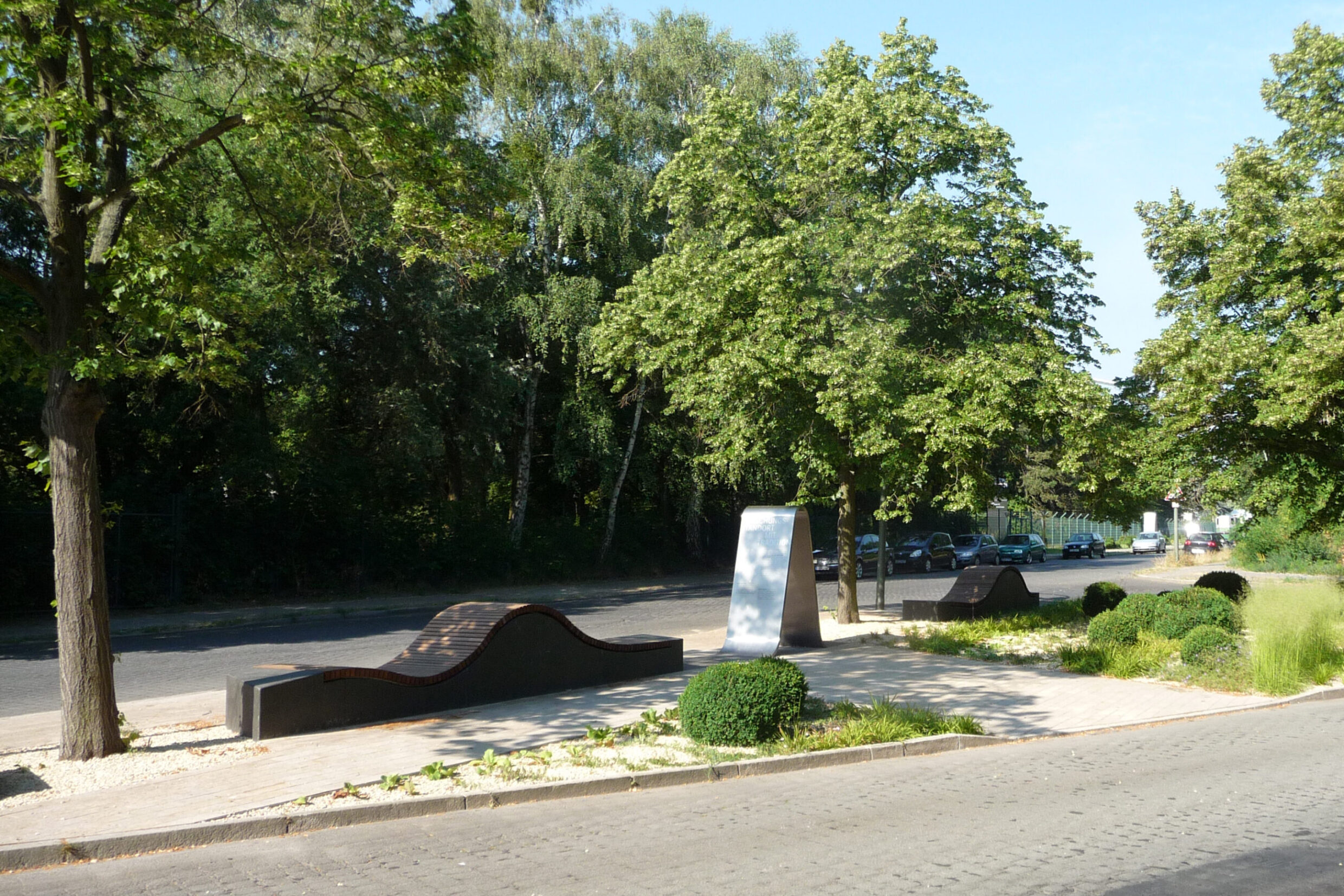
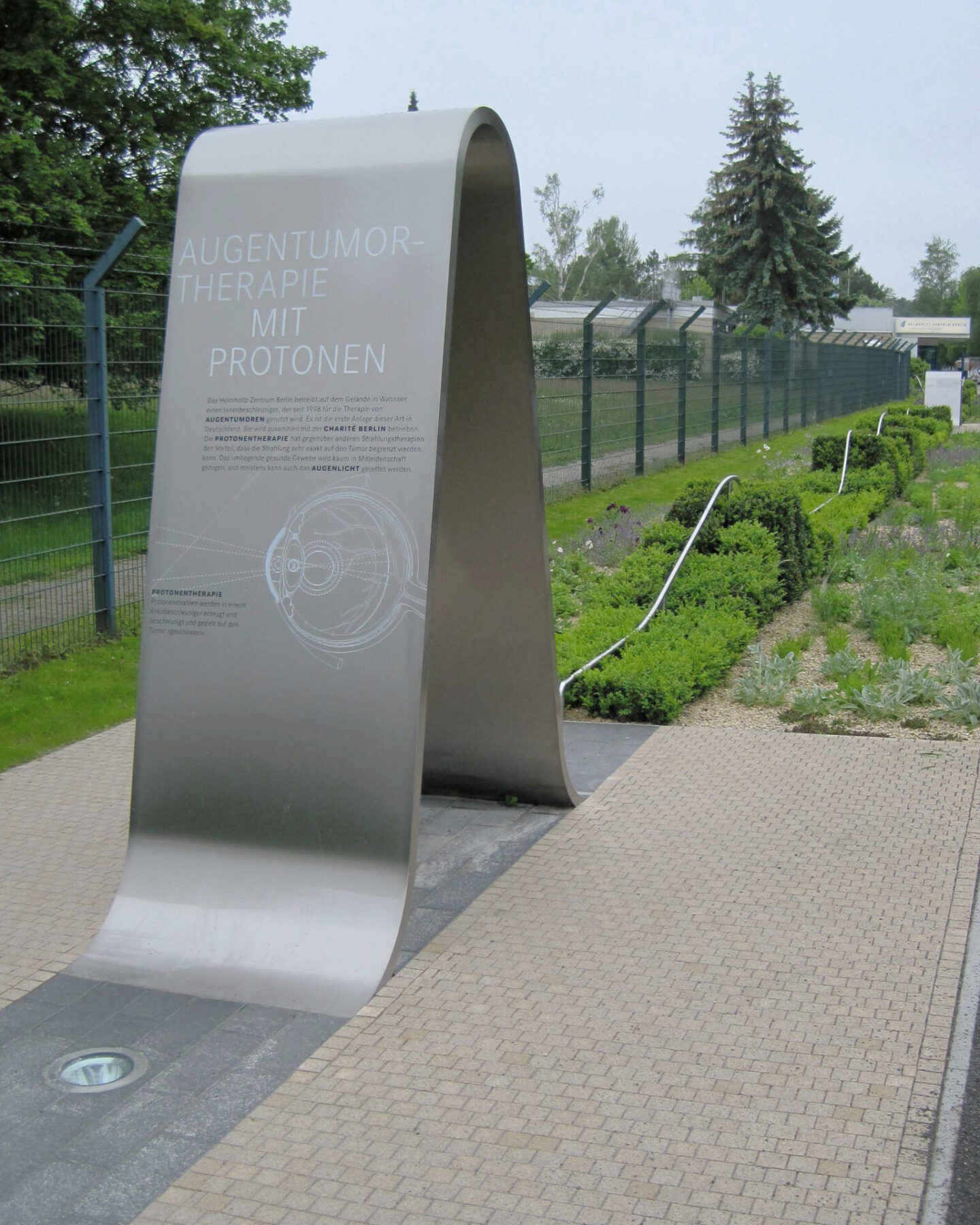
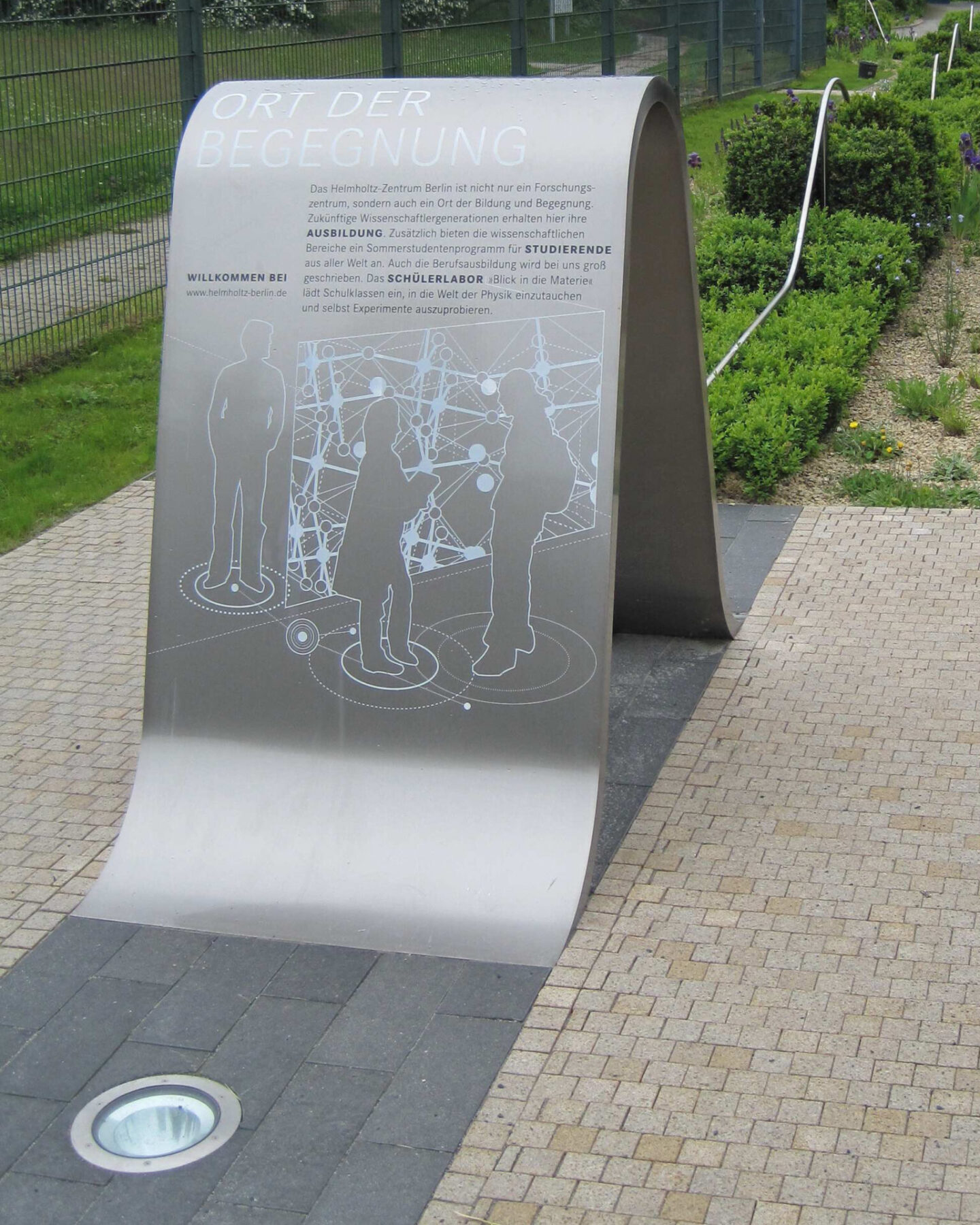
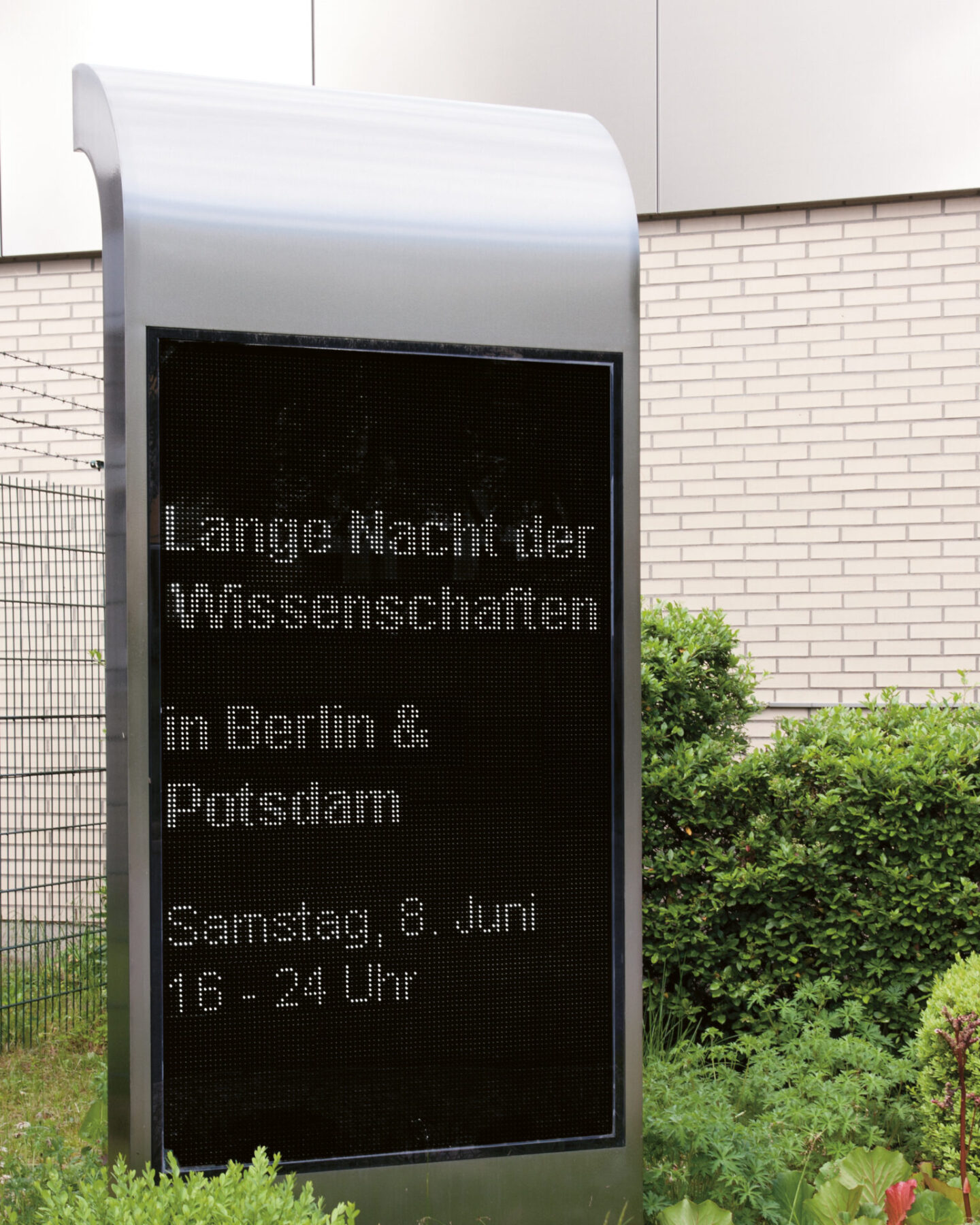
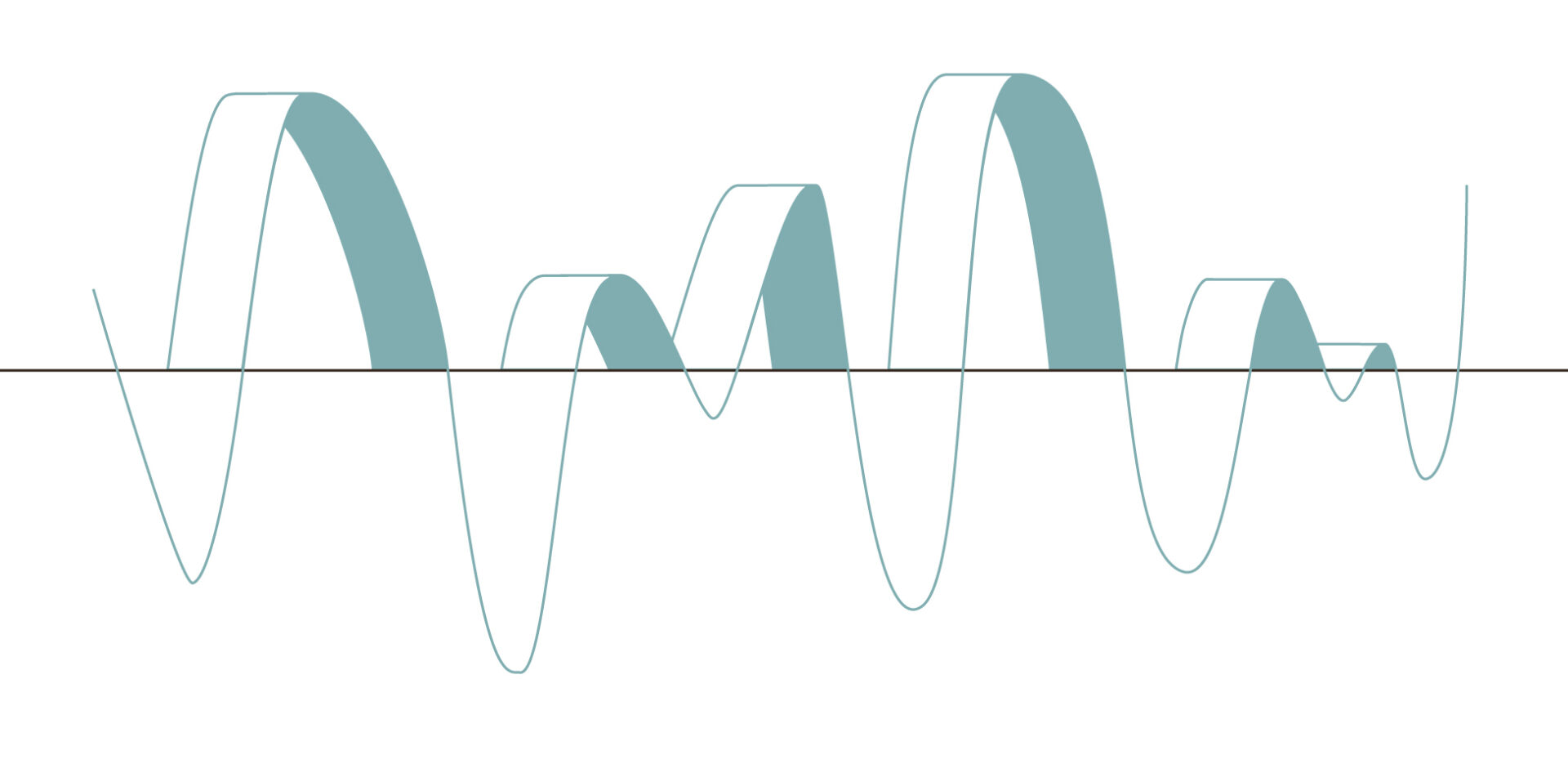
Waves are the common denominators of energy and magnetic fields. They are the focus of research at the Helmholtz Centre. The design draws on the sine wave shape and flows above ground in the form of trimmed boxwood and stainless steel stelae. The stelae represent technology, and are in sharp contrast to the surrounding environment.
